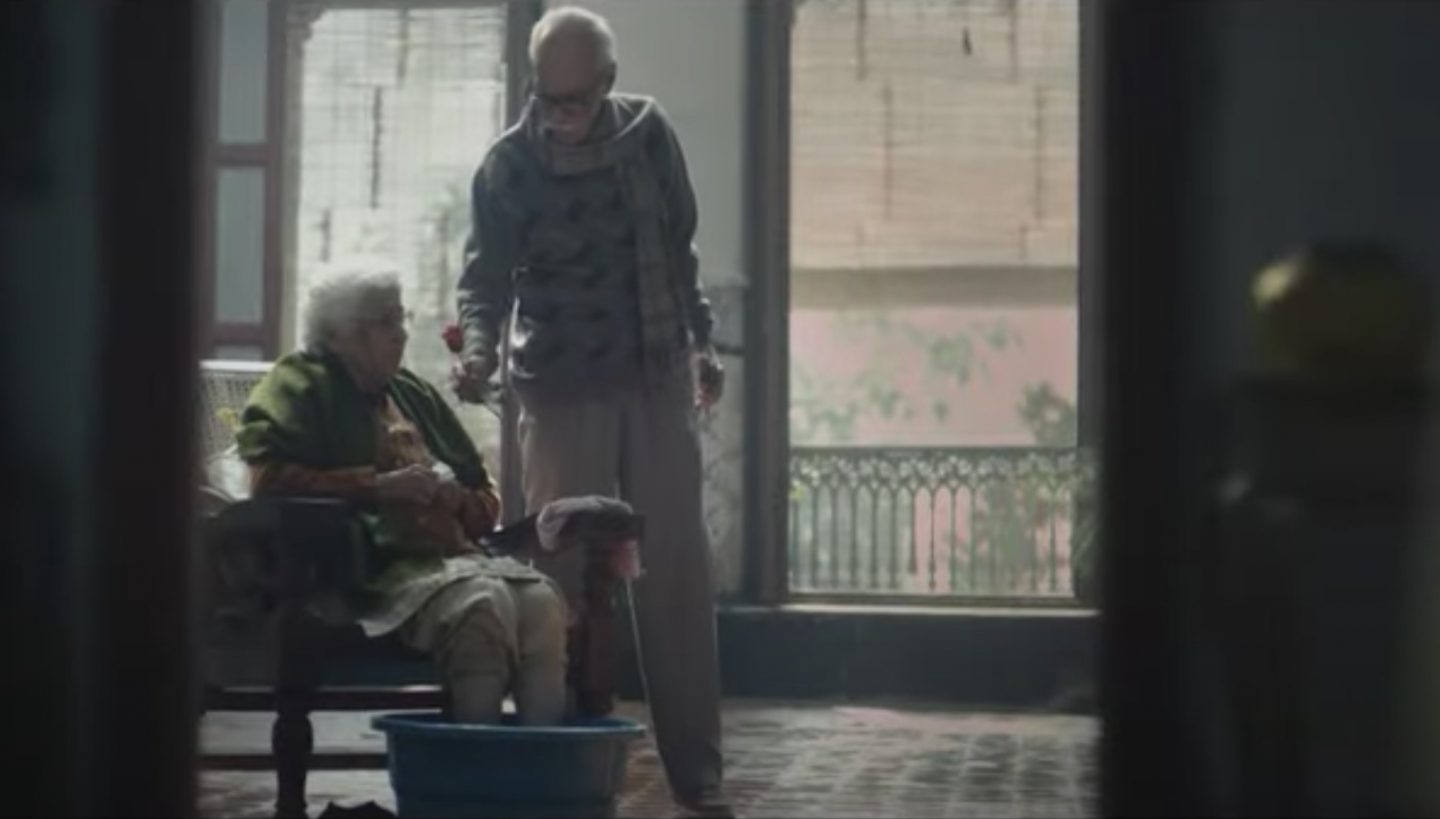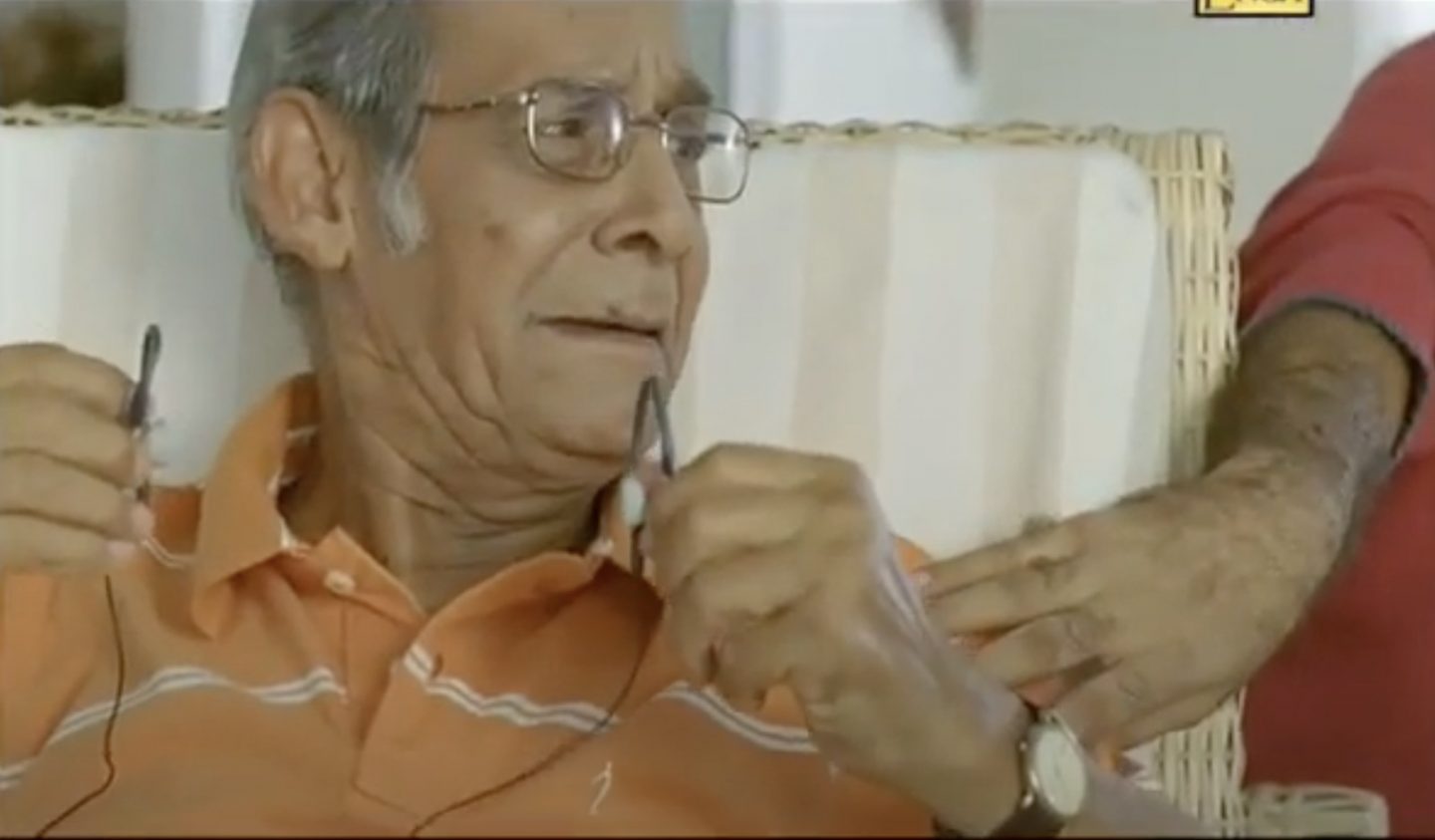Max Bupa commercial — detail
One of 10 items cross-posted from SEMIONAUT.
Whenever you meet clients in India, it seems that every brand is striving to be youthful and wants to target 18-25 year olds. The rest of us on the wrong side of this age divide might as well make ourselves scarce. Any ad review over the last ten years will only showcase young people and older people, if they exist, will at best be middle-aged parental figures, representing irritant authority against whom the youth kick off to make a point. They were either judgmental mother in law like figures, inspecting the home of young couples to see whether their kitchens and bathrooms were being kept up well or simply uncomprehending of the ways of the young generation.
In the past couple of years, there has been an interesting shift. Old people have made an appearance, first in advertising for financial products such as pension plans and now making inroads into sectors such as telecom which were bastions of youth. The old people are emphatically old — very wrinkled and proceeding towards being bent as well. The physicality is where the archetype parts way with the character. They mostly do not conform to the archetype of the wise old man/woman and nor to the covert social take of being strange and cranky.

This is a significant shift in a culture that is beginning to idealize youth. The balance of power has tipped in their favour of young people as they are more economically empowered, making more money than their parents ever saw and also being inherently tech savvy and therefore better able to negotiate the world today. Traditionally, moving towards maturity and old age was revered and somewhat eagerly awaited. With advancing age came all the privileges of enhanced status and authority reflected in being consulted by the young on every decision and putting the seal of approval on every purchase. Advancing old age meant that it was pay back time for the young, where any good kid was going to dutifully serve and put the elder’s wish before his while the old cultivated a detachment from worldly affairs and a move towards spirituality.
Against the backdrop of this shift, advertising’s sudden engagement with the old and this moving into the foreground of collective consciousness is intriguing. Post tipping of balance of power, what codes govern old age? Perhaps when there is an ambiguous space the imagination runs free. Collectively there is a need to re imagine old age. The contours this reimagining has taken are interesting.

In this imagination, as reflected in advertising, the old are not moving towards either detachment or spirituality. The mood is light, marked with merriment. While the physicality is exaggeratedly old the behavior is emphatically like that of a teenager.
Portrayal of the old as carefree and a tiny bit irresponsible is reflected in a health insurance ad where the son is evaluating a policy and wants his father’s opinion but the father is too busy listening to rap on his iPod and would rather talk about the music than insurance. Or in a bunch of oldies giggling like school girls, cheating at cards and planning a birthday surprise for their brother; again from an insurance ad.
Another theme that gets repeated is that of romance between the old, which is particularly interesting as old couples in India are expected to be done with overt expressions of romance by the time the children come along. Buying diamond rings for your wife in your old age especially when it is preceded by a lifetime of restrained consumption is intriguing; as is an awkward old man giving his dour wife a rose on Valentine’s day when the cultural norm is one of functional choices and practical transactions between couples.
Reimagining old age is fertile creative territory for the agencies in India and perhaps it is media validation and way forward for those living in changed times. Or maybe an acknowledgement of those who have the big bucks and a history of being consumption deprived.
Original publication date: March 2013.


